Submitted:
19 June 2024
Posted:
21 June 2024
You are already at the latest version
Abstract
Keywords:
1. Introduction
2. Methods
2.1. Spectral Inversion Objective Function
2.2. High-Resolution Seismic Data Processing Workflow
2.2.1. Spectral Inversion Algorithm Based on Compressed Sensing Theory
2.2.2. Continuous Wavelet Transform
3. Results
4. Discussion and Conclusions
Author Contributions
Funding
Data Availability Statement
Acknowledgments
Conflicts of Interest
References
- Peng, S.P.; Zhao, J.T.; Sheng, T.J.; Yang J.; Tao, J.H. Status and advance of seismic diffraction exploration in coalfield[J]. Coal Geology & Exploration,2023,51(1),1−20. [CrossRef]
- Peng, S.P. Current status and prospects of research on geological assurance system for coal mine safe and high efficient mining[J]. Journal of China Coal Society,2020,45(7): 2331-2345. [CrossRef]
- Luo, Z.Q.; Liu, P.; Tang, J.Y.; Liu, Z.L. Present situation and development direction of seismic exploration technology for hidden disaster-causing factors in coal mine[J]. ChinaCoal,2023,49 (1), 16-29.
- Wang, G.F.; Meng, L.Y. Development of coal mine intelligence and its technical equipment[J]. China Coal,2023,49(7):1-13.
- Wang, H.J.; Cao Y.; Wang H.L. Research and practice on key technologies for intelligentization of coal mine[J]. Coal Geology & Exploration,2023,51(1):44-54.
- Li, B.Q. Research on the technologies and application of general survey and treatment of hidden disaster causing geological factors in zhaozhuang Coal Mine[J]. China Coal,2022,48(S2):117-122.
- Wang J.W.; Wang H.J.; Wu H.; Wu Y.; Han K.; Cheng X.; Dong M.T. Research on transparency of hidden disaster causing factors in coal mines based on 3D geological modeling technology[J]. Journal of Mine Automation,2024,50(3):71-81,121. [CrossRef]
- Yuan, L.; Zhang P.S. Development status and prospect of geological guarantee technology for precise coal mining[J]. Journal of China Coal Society, 2019,44(8):2277-2284. [CrossRef]
- Zhang, E.W.; Zhou, J.J. Application research on three-dimensional seismic fine processing and recognition technology of small fault structure in Yuwu Mine[J]. Coal and Chemical Industry, 2023,46(9):79-82.
- Cheng, Y.L.; Wang, Z.F. Research and application of high-density 3D seismic exploration technology for in fault detection[J]. China Coal. 2022,48(S1):197-205.
- Yu, Z.M.; Han, D.F. Exploration and application of 3D seismic technology in first mining area of Hujiahe Coal Mine[J]. Coal Science & technology magazine,2023,44(4):156-161.
- Yang, C.M. Research and application of high precision 3D seismic prospecting technology in coal mining area[J]. China Energy and Environmental Protection,2017,39(11):238-241,245.
- Wang, X.D.; Liu, L. The application of shallow high accuracy 3D seismic exploration method to exploring burned area of Ningtiaota coal mine[J]. Chinese Journal of Engineering Geophysics,2019,16(2):174-183.
- Jin, Z.L.; Liu, X.; Gao P. Application of high-precision 3D seismic exploration technology in Buertai coal mine[J]. China Coal,2022,48(S1):180-187.
- Yilmaz, Öz.; Doherty, S. M. “Seismic data processing.” (1987).
- Gao, J.H.; Wang, L.L.; Zhao W. Enhancing resolution of seismic traces based on the changing wavelet model of the seismogram[J]. Chinese Journal of Geophysics (in Chinese), 2009, 52(5): 1289-1300. [CrossRef]
- Jin, M.X.; Zhang, B.; Yi, S.C. Research on the application to seismic data in Bohai bay based on Gabor deconvolution[J]. Progress in Geophysics, 2017, 32(2): 856-861. [CrossRef]
- Mallat, S. A Wavelet Tour of Signal Processing, Third Edition: The Spare Way[M]. Academic Press, 2008.
- Wan, T.; Gao, J.H.; Chen, W.C.; Wang, B.J. TP wavelet and its applications to analysis of seismic data of thin interbeds[J]. COAL GEOLOGY & EXPLORATION, 2005, 33(4): 69-72.
- Portniaguine O.; Castagna J. Inverse spectral decomposition[J]. Seg Technical Program Expanded Abstracts, 2004, 23(1): 2586. [CrossRef]
- Smith, M.; Gary, P.; Jaime, S. Extending seismic bandwidth using the continuous wavelet transform [J]. First Break, 2008, 26: 97-102. [CrossRef]
- Mao, H.B.; Fan, X.; Yang, X.H.; Huang, J.; Chen, W.C. Application research on improving the resolution of broadband land post-stack seismic data in wavelet domain[J]. Geophysical Prospecting for Petroleum, 2019, 58(4): 541-546, 579. [CrossRef]
- Stockwell, R.G.; Mansinha, L.; Lowe, R.P. Localization of the complex spectrum: the S-transform[J]. IEEE Trans on Signal Processing,1996,44(4):998-1001. [CrossRef]
- Huang, H.D.; Feng, N.; Wang, Y.C. Cai Yanjie. High-resolution seismic processing based on generalized S transform. OGP, 2014, 49(1): 82-88.
- Yang, K.; Liu, W. The marine seismic data high resolution processing based on Hilbert-Huang transform [J]. Chinese Journal of Engineering Geophysics, 2015, 12(1): 22-26.
- Pham, D. H.; Meignen, S. High-Order Synchrosqueezing Transform for Multicomponent Signals Analysis With an Application to Gravitational-Wave Signal[J]. IEEE Transactions on Signal Processing, 2017, 65 (12), pp.3168-3178. [CrossRef]
- Dragomiretskiy, K.; Zosso, D. Variational mode decomposition[J]. IEEE Tran on Signal Processing, 2014, 62(3): 531-544. [CrossRef]
- Hale, D. An inverse Q-filter[A]. Stanford Exploration Project [C], 1981, 28: 289—298.
- Wang, J.; Yang, C.C.; Qiao, Y.L. Improve the seismic resolution with a stable and efficient inverse Q filter[J]. Progress in Geophysics, 2008, 23(2): 456-463.
- Chopra, S.; Alexeev, V.; Sudhakar, V. et al. High-frequency restoration of surface seismic[J]. The Leading Edge,2003,22(8):730-738. [CrossRef]
- Cheng, L.; Kong, Q.F.; Song, J.G. A step-by-step iteration for joint frequency expanding. OGP, 2017, 52(4): 696-703.
- Yu Z.; Wang, Y.C.; He, J.; Yang, R. A review of inverse Q filtering methods [J]. Progress in Exploration Geophysics,2009,32(05):309-314+325+307.
- Chen, C.R.; Zhou, X.X. Improving resolution of seismic data using wavelet spectrum whitening. OGP, 2000, 35(6): 703-709.
- Lu, W.K.; Ding, W.L.; Zhang, S.W.; Xiao, H.Q.; Zhao, M.H. A high-resolution processing technique for 3_D seismic data based on signal subspace decomposition[J]. Chinese Journal of Geophysics (in Chinese), 2005, 48(4): 896-901.
- Yan, Z.H.; Fang, G.; Xu, H.N.; Liu, J.; Shi, J.; Pan, J.; Wang, J.Q. The application of Hilbert spectral whitening method to high resolution processing of marine seismic data[J]. Marine Geology & Quaternary Geology, 2018, 38(4): 212-220. [CrossRef]
- Puryear, C.I.; Castagna, J.P. Layer-thickness determination and stratigraphic interpretation using spectral inversion: Theory and application[J]. Geophysics, 2008, 73(2): R37-R48. [CrossRef]
- Chopra, S.; Castagna, J.P.; Xu, Y. Thin-bed reflectivity inversion and some applications[J]. First Break, 2009, 31(1299):27-34.
- Chopra, S.; Castagna, J.P.; Xu, Y. Relative acoustic impedance application for thin-bed reflectivity inversion[C]. 2009 SEG Annual Meeting, Houston, 2009, 1-5.
- Zhang R, Castagna J. Seismic sparse-layer reflectivity inversion using basis pursuit decomposition[J]. Geophysics, 2011, 76(6): R147-R158. [CrossRef]
- Zhang R, Sen M K, Srinivasan S. A prestack basis pursuit seismic inversion[J]. Geophysics, 2012,78(1): R1-R11. [CrossRef]
- Cao, J.H.; Qiu, Z.H.; Guo, D.H.; Wang, X.Y. Post-stack seismic spectral-inversion technique and its application[J]. Progress in Geophysics, 2013, 28(1): 387-393. [CrossRef]
- Candès, E. J. Compressive Sampling. International Congress of Mathematicians, 2006, ICM 2006 3:1433–52.
- Candès, E. J., Justin, K. Romberg, and Terence, T. “Stable Signal Recovery from Incomplete and Inaccurate Measurements.” Communications on Pure and Applied Mathematics,2006, 59(8):1207–23. [CrossRef]
- Donoho, D.L. Stable Recovery of Sparse Overcomplete Representations in the Presence of Noise. IEEE Transactions,2006, 52(10):6–18. [CrossRef]
- Baraniuk, Richard G. More Is Less: Signal Processing and the Data Deluge. Science,2011,331(6018):717–19. [CrossRef]
- Shu, M.C.; Zhang, F.; Zou, J.R.; Huo, S.D.; Luo, M.; Zhang W.D.; Li W.T.; Mu, S.Q.; Liang Y. Spectral inversion algorithm based on compressive sensing and its applications while drilling. Chinese Journal of Geophysics (in Chinese), 2023, 66(1): 34-45. [CrossRef]
- Blumensath, T.; Mike E. D. Iterative Thresholding for Sparse Approximations. Journal of Fourier Analysis and Applications,2008, 14(5–6):629–54. [CrossRef]
- Blumensath, T.; Mike E. D. Iterative Hard Thresholding for Compressed Sensing. Applied and Computational Harmonic Analysis,2009 27(3):265–74. [CrossRef]
- Bergeaud, F.; and Stéphane M. Matching Pursuit of Images. Pp. 285–300 in Wavelet Analysis and Its Applications, 1998,Vol. 7.
- Needell, D., and Tropp, J. A. CoSaMP: Iterative Signal Recovery from Incomplete and Inaccurate Samples. Applied and Computational Harmonic Analysis,2009, 26(3):301–21. [CrossRef]
- Foucart, S. Hard thresholding pursuit: an algorithm for compressive sensing. SIAM Journal on Numerical Analysis, 2011,49(5/6), 2543–2563. [CrossRef]
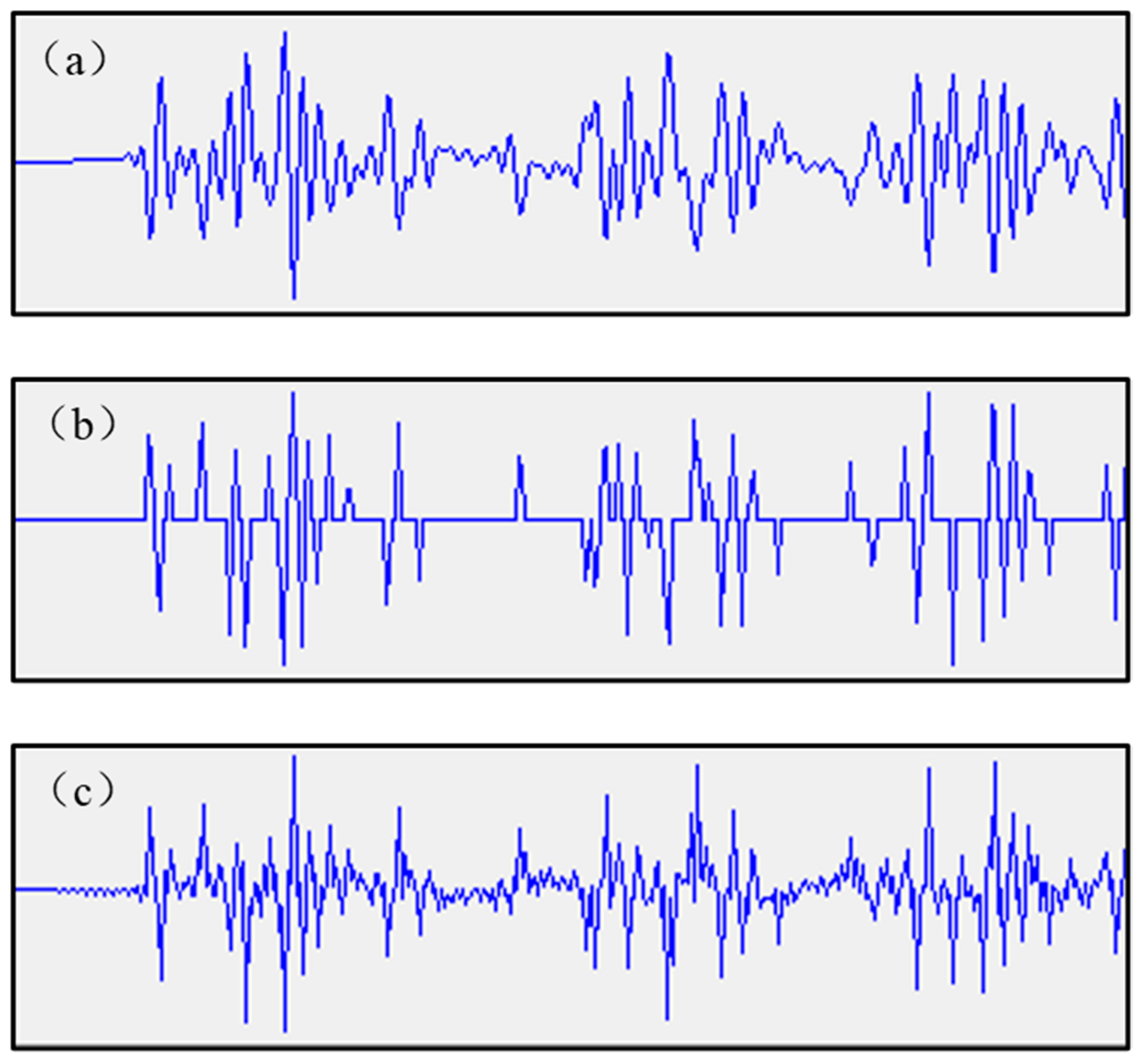
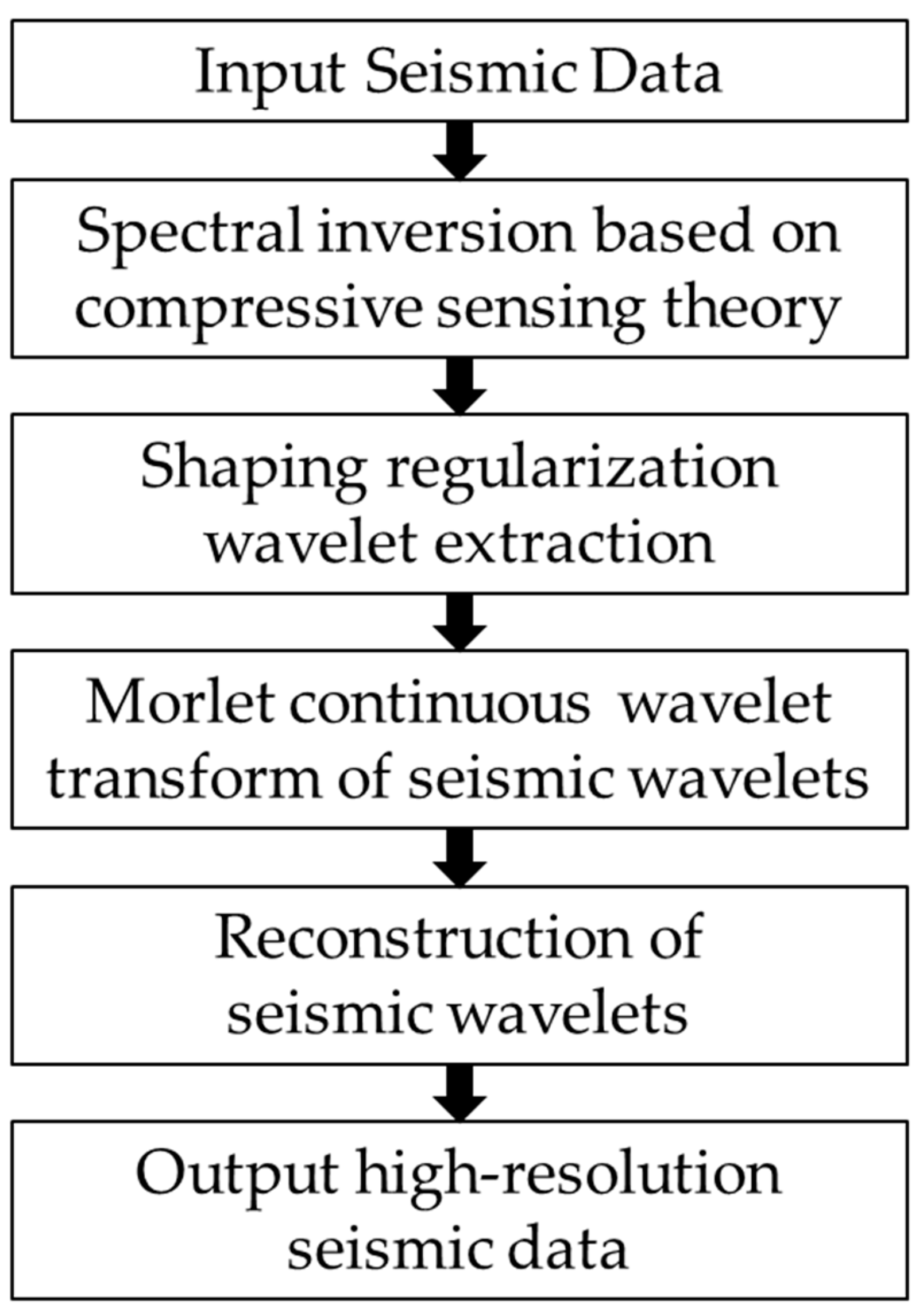
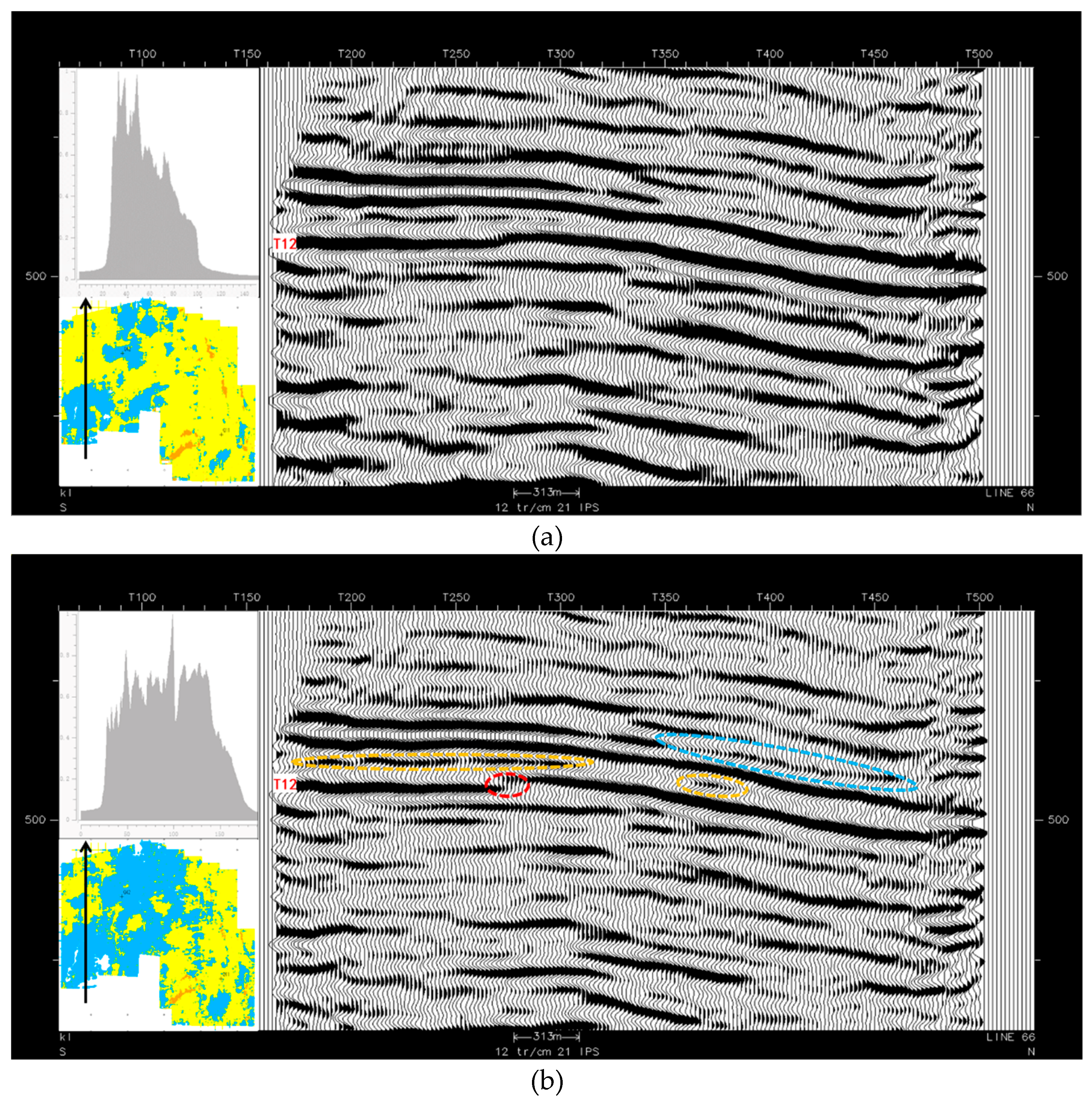
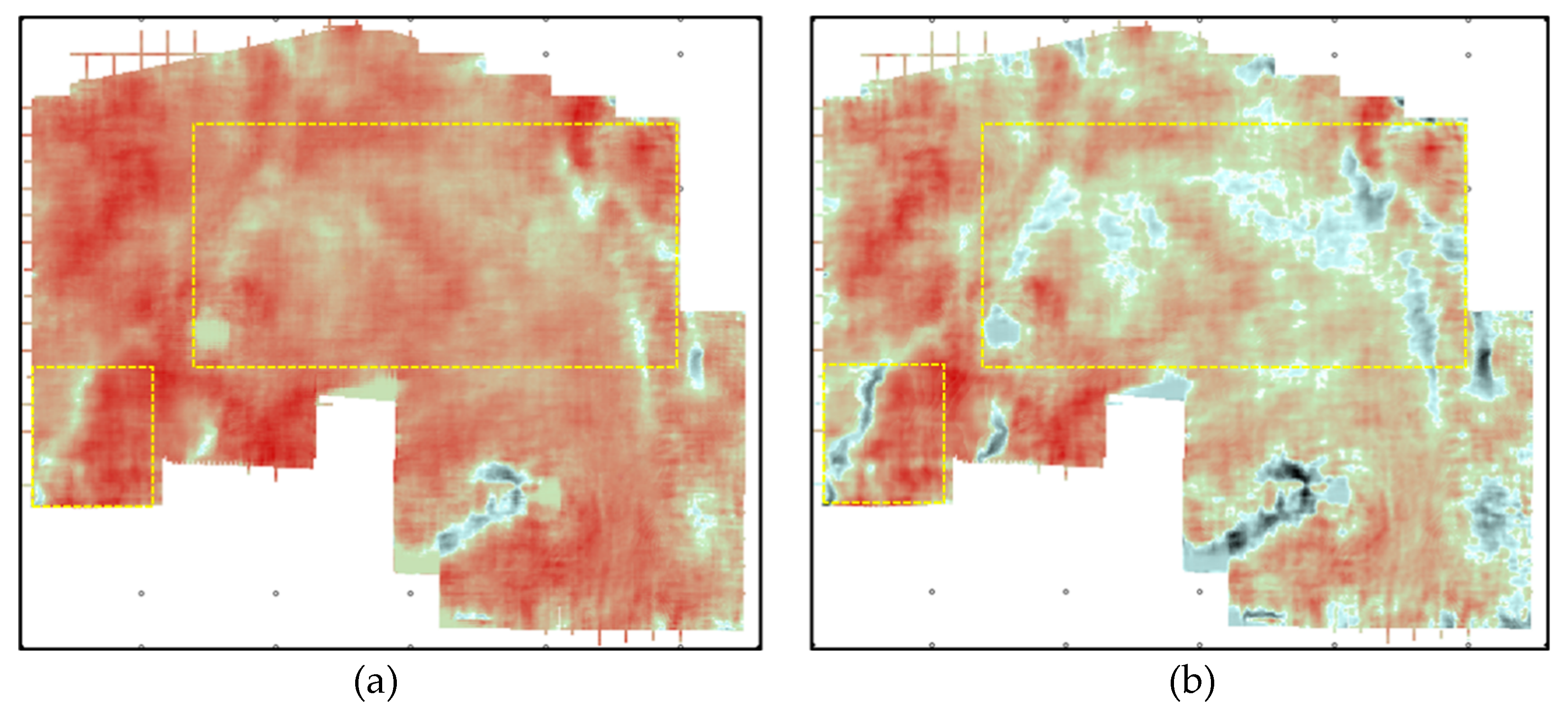
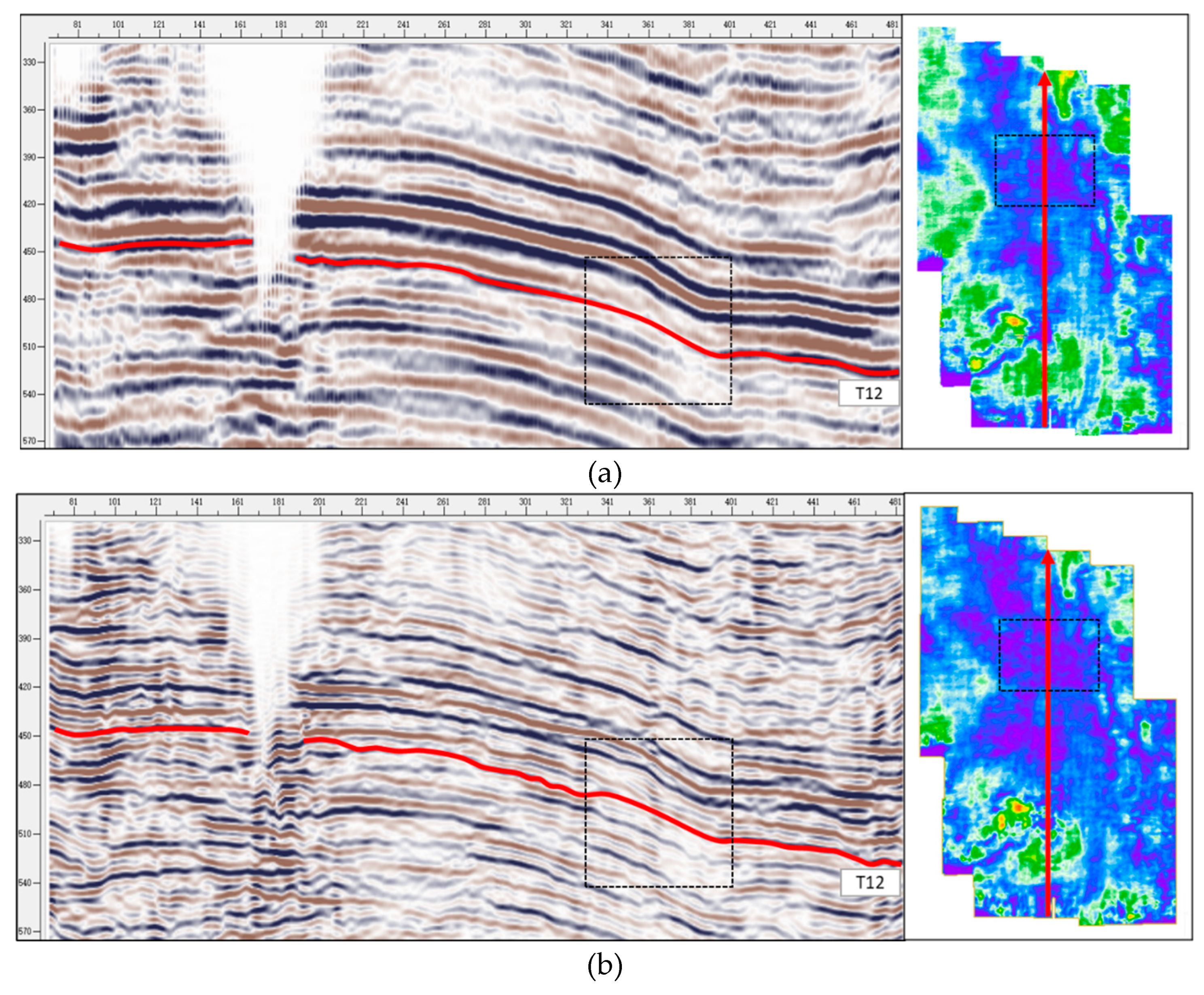
Disclaimer/Publisher’s Note: The statements, opinions and data contained in all publications are solely those of the individual author(s) and contributor(s) and not of MDPI and/or the editor(s). MDPI and/or the editor(s) disclaim responsibility for any injury to people or property resulting from any ideas, methods, instructions or products referred to in the content. |
© 2024 by the authors. Licensee MDPI, Basel, Switzerland. This article is an open access article distributed under the terms and conditions of the Creative Commons Attribution (CC BY) license (http://creativecommons.org/licenses/by/4.0/).



